The first section of the Portuguese Way in Galicia crosses the River Miño from Valença through the international bridge towards Tui. In the past, pilgrims coming from Portugal had to reach Galicia by crossing the river on a boat, but after the construction of the bridge in 1884, they could finally cross it on foot.
READ MORETui was the capital of a province in the Old Kingdom of Galicia and that glorious past has left some impressive buildings, such as the Cathedral. It was begun in the 12th century, during the Romanesque period, although it has a Gothic façade, one of the first in this style in the Iberian peninsula. The cloister is also of Gothic style; it is the only original one still extant in any Galician cathedral. You can visit it from 10:45 to 13:00 and from 16:00 to 19:00 from September to May and until 20:00 from May to June and until 21:00 from June to September. The ticket costs 3 Euros with an audio guide and you may get a discount for groups, students or children. The route continues along the Praza do Concello, the Convent of As Clarisas and the church of Santo Domingo.
If you leave Tui, once you go past the temple of San Bartolomeu de Rebordáns, the route goes towards O Porriño, through the bridge of San Telmo, over the River San Simón.
Once you reach A Madalena, pilgrims continue to Ribadelouro, cross an industrial park to arrive at O Porriño proper. The walk along the industrial park is a bit complicated, especially during the summer months, as this is a straight stretch of 4 km without any shade and along an asphalt road. Some pilgrims decide to take the alternative Camino through As Gándaras and the River Louro to avoid crossing the industrial park. You will also find yellow arrows directing you to the municipal hostel of O Porriño. To choose this Camino you have to take a detour onto a footpath leaving to your left in Orbenlle, after you go past the first houses. This is a stretch with native flora, bridges and river landscapes, 500 metres longer than the traditional one that runs along the N-550.
In O Porriño, you should visit the town hall, a 19th-century building by the renowned architect Antonio Palacios, made of local granite (this municipality is famous for its granite quarries, especially the pink variety, which is actually called “Rosa Porriño Granite”). The old town is full of cafeterias, supermarkets and all sorts of shops, and every Tuesday there is a street market.
Some pilgrims choose to continue walking and complete the next section in one day.
How to get to Tui
Tips from our postmen and women
What to do and see in Tui?

"If you have time in Tui, you can climb Mount Aloia, some 4 km away. It is a natural park with great views over Tui, the bridges, Cathedral and Portugal. It has a visitors' centre, hiking routes, and some prehistoric and Roman remains".
What to do and see in O Porriño?

“In the municipality of O Porriño, in the area of Budiño, there is a lake formed by the River Louro, where you can find migratory birds which come here to breed. There is an ornithological centre there as well as a visitors' centre for bird watching".
Accommodations Tui - O Porriño
Image gallery
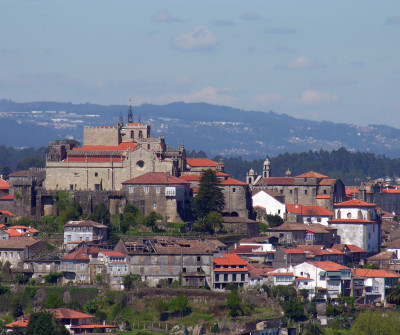
Vistas de Tui, inicio del Camino Portugués
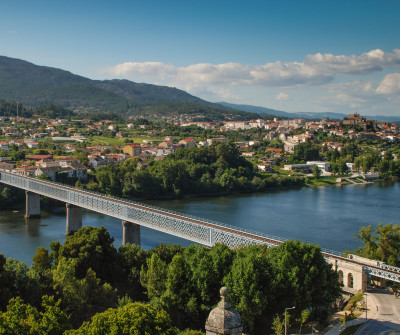
Puente Internacional de Tui, inicio del Camino Portugués
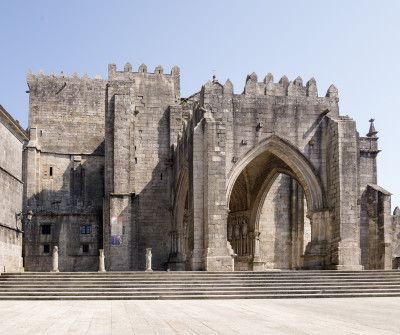
Catedral de Tui en la primera etapa del Camino Portugués
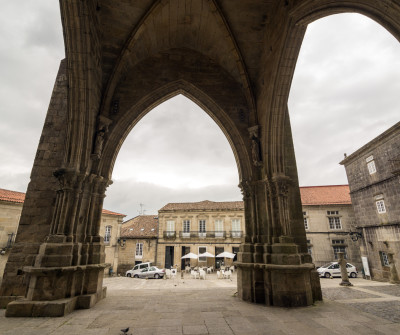
El pueblo de Tui, primera etapa del Camino Portugués
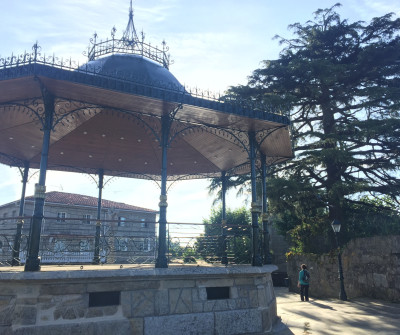
Palco de la Música de Tui, inicio del Camino Portugués
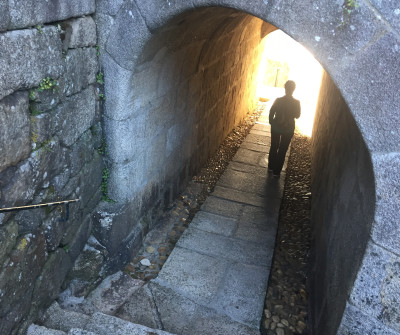
Pasaje en Tui, parte del Camino Portugués
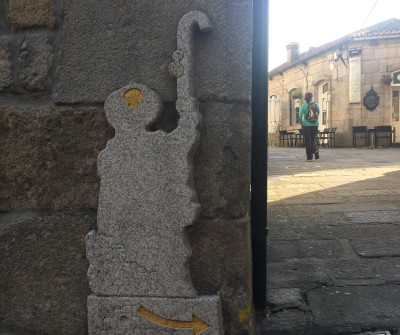
Salida de Tui, primera etapa del Camino Portugués
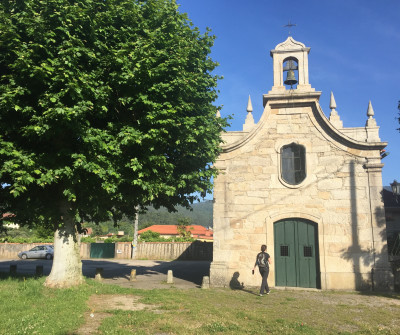
Iglesia Virgen del Camino, Camino Portugués
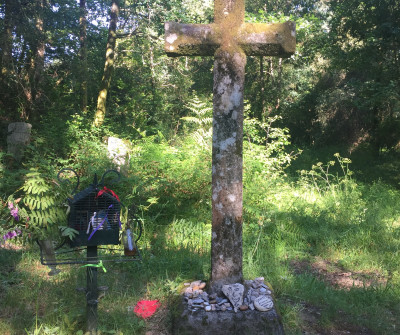
Cruz en Tui, primera etapa del Camino Portugués
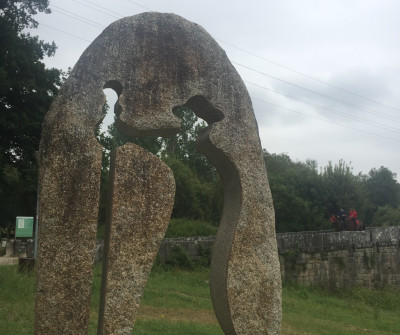
Peregrino en Tui, primera etapa del Camino Portugués
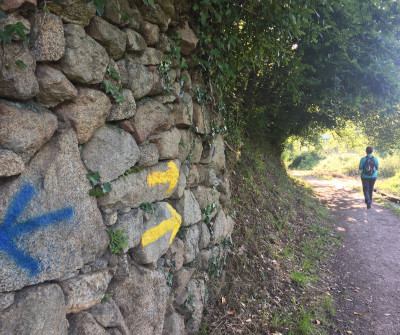
Flechas amarillas en Tui marcan el Camino Portugués
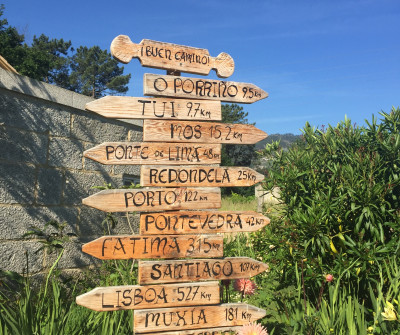
Señales en Tui indican el Camino Portugués
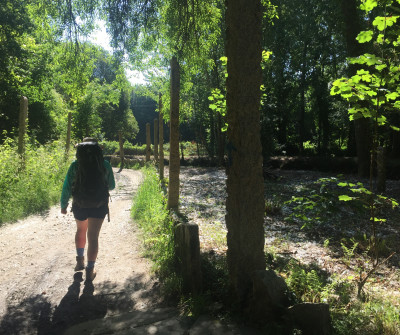
El Camino Portugués en su paso por el Río Louro
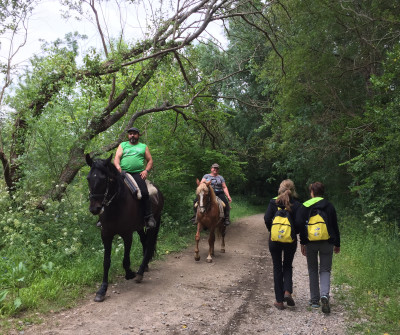
Peregrinos haciendo el Camino Portugués a caballo
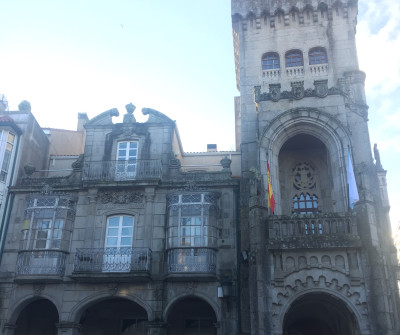


 Filter
Filter